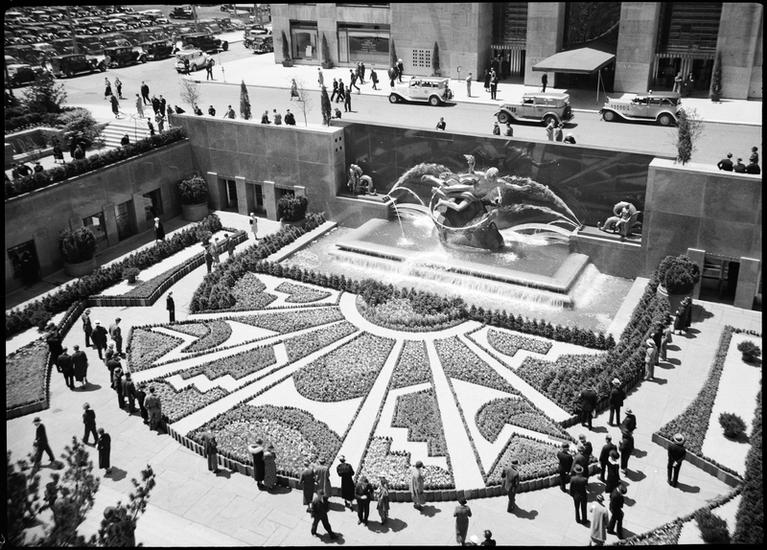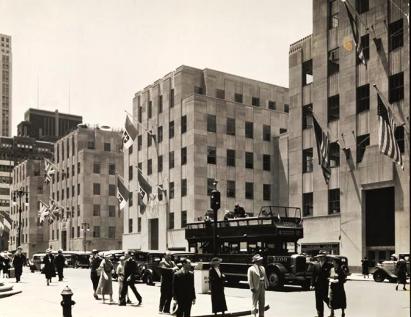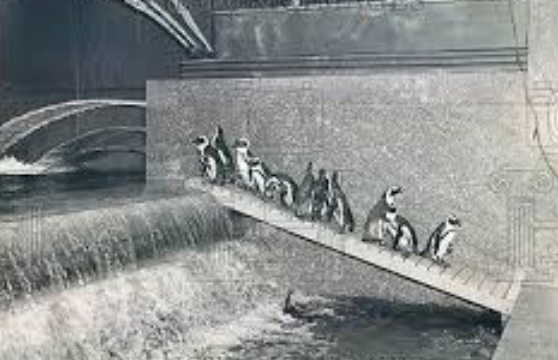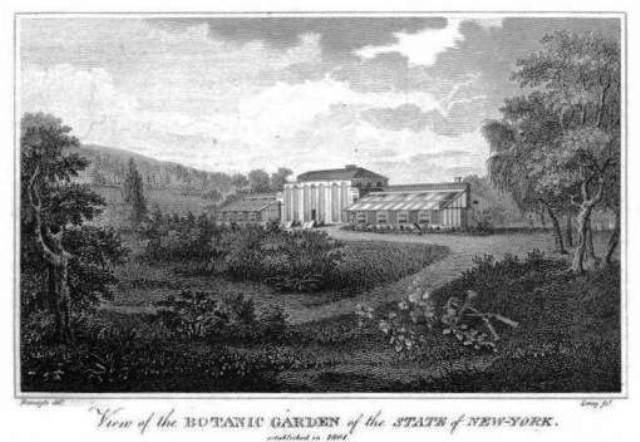Ever since the first Christmas tree went up in 1931, and the outdoor skating rink opened in 1936, Rockefeller Center has been associated with ice skaters and the winter holiday season. But what many people may not know is that the Prometheus Fountain in the sunken plaza at Rockefeller Center has also been home to a few sea lions and penguins during the off season.

On July 2, 1941, four sea lions from the Bronx Zoo were delivered to Rockefeller Center for an experimental display. The sea lions – Dixie, Trixie, Frankie, and Johnnie — arrived in two crates with their zoo keepers, John Martini and John Olsen. All four were released into the Prometheus Fountain pool in the sunken plaza without difficulty.
The sea lions were an immediate hit with children and their mothers, as well as with businessmen who came to visit them on their lunch breaks. They were so popular, in fact, that a few more sea lions from California were added about a week later, including one named Pete.
From Pool to the Promenade
While most of the sea lions were content to swim in their new midtown pool, two-year-old Frankie was a bit more adventurous. On the first day that Frankie and his friends arrived, he climbed up on the ledge of the pool, surveyed his surroundings, and scaled over the 1 ½-foot high fence into the Promenade Café.
He then made a beeline for two women who were eating lunch. He perched on his tail fin, bobbed his head over the table, and begged for a handout (I guess the seven pounds of butterfish he was fed every day was not enough).

The two zoo keepers and some other guards immediately came to the women’s rescue and led Frankie back to the pool. They told reporters they would obviously have to keep a constant watch on the sea lions until the fence could be raised.
After that incident, things went swimmingly well until August 15, when it was time for the sea lions to move out and the penguins to move in. At about 10:15 a.m., as four keepers were hoisting the sea lions’ crates into a New York Zoological truck, Pete broke free and landed on Fifth Avenue. All 450 pounds of him.
Patrolmen in Pursuit
As Pete started waddling up Fifth Avenue, John and John the zoo keepers jumped from the cab of the truck and ran into a store shouting for brooms. Two other keepers and three New York City patrolmen joined in the pursuit, each brandishing a broom. A crowd of onlookers that had come to welcome the penguins turned their attention to Pete the sea lion instead.

After ducking under a car for a few minutes, Pete continued on his way, poking his wet nose into the posh shops and nudging the shoppers and pedestrians. Alas, his adventure came to an end when he reached the entrance of Yardley & Co. in the British Empire Building at 620 Fifth Avenue. As he tried to batter his way inside, the clerks locked the door, giving the keepers time to capture him.
Mind you, while all this commotion was happening with Pete the sea lion, Annie and about a dozen other penguins from the Bronx Zoo and New York Aquarium were gearing up for the second act at the Prometheus Fountain pool.
This group included 12 black-footed penguins that came from South Africa and three Humboldt penguins from the west coast of Brazil. Twelve zoo keepers were on hand day and night to help keep the peace among the two groups.

Like the sea lions, the penguins were also a big hit with the public. The favorite penguin was Fuddy-Dud, who kept the crowd laughing as he slid down the ramp from the upper to the lower pool. To prevent the penguins from smelling fishy, they were all sprayed every day with a fragrant scent to counteract their natural odor.
According to news reports, the penguins and sea lions proved so popular that summer, the Rockefellers at one time considered getting some polar bears for the pool. I’m sure that would have worked out just fine.

Did You Know?

The land now occupied by Rockefeller Center was once the site of the Elgin Botanic Garden, the first botanical garden in New York State. The 20-acre gardens were established in 1801 by Dr. David Hosack, Columbia professor of botany and Materia Medica (he was also the doctor who attended to Alexander Hamilton after his fatal duel with Aaron Burr). He purchased the land between Middle Road (Fifth Avenue), Sixth Avenue, 47th Street and 51st Street for $4,807.
The gardens featured a conservatory for the preservation of green house plants, two hot-houses, and a pond for aquatic species. The whole establishment was surrounded by trees and shrubs and a 7-foot stone wall.
Ten years after they opened, the gardens were turned over to the Regents of the University (now known as SUNY Board of Regents). They were eventually abandoned, fell into decay, and later transferred to Columbia College under a New York State statute titled An Act for the Promotion of Literature and other Purposes.
In 1819, Governor DeWitt Clinton (Columbia College 1786) and state legislature permitted the college to lease the former gardens, dropping a requirement that it be a future college site. There was no real interest in the land at this time, so the legislature also granted $10,000 to the college to compensate for land’s poor financial returns. The trustees weren’t too thrilled with this deal, though, and over next three decades they came close to selling the property several times.
Finally, in 1929, Columbia trustees signed a 30-year lease with the Rockefeller family for construction of Rockefeller Center. The annual rent Columbia was 3 million dollars, which was about 40 percent of Columbia’s operating income.




LOVED the stories and the pictures. I never knew that, very cool. Super post.
I’m so glad you enjoyed it. As I wrote in my “About” page, my favorite stories are the ones that make people say, “Wow, who knew?!”
How precious! No where have I ever heard of this. Thank you for bringing it to light!
Visit me at: Life & Faith in Caneyhead
I am Ensign B of Tremps’ Troops
with the A to Z Challenge
How wonderfully interesting. Poor penguins, though, being sprayed so they didn’t smell. What arrogant creatures we are.
Forgot to say, http://www.lizbrownleepoet.com
This is fascinating! I wish they still had penguins and sea lions in the fountain. I would certainly go to visit them. Imagine the story that the woman, whose lunch was interrupted by the sea lion, had to tell at her next ladies meeting!
I’m glad you enjoyed it! Penguins would be really fun, but they’d have to improve the security measures so the penguins wouldn’t get out and the coyotes wouldn’t get in! It’s a good thing they never went ahead with the polar bears.
True. I think that would have a negative effect on tourism but it might help the crime rate in the area! 😉
Hi, I’m stopping by from the A to Z Challenge and just wanted to let you know about our party. The A to Z Reflections Linky List will open on Monday May 4th, and you’re more than welcome to join. 🙂
And congrats on making it to the letter P. I love those old photographs. How adorable.
Thank you for the invite — glad you enjoyed the story! Unfortunately I got called away on business with my company during the last week of the challenge so I had to put it on hold. I plan on finishing the alphabet over the next few weeks now that I’m back home.